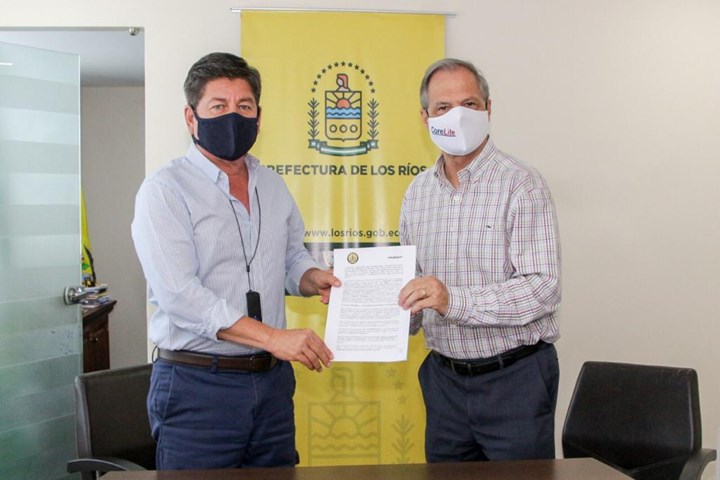CoreLite signs agreement for balsa wood supply
Balsa wood plantations will be planted and harvested throughout the Los Rios Province over a five-year period, bringing technological development, jobs and restoration of the ecosystem.

Photo Credit: CoreLite
CoreLite (Miami, Fla., U.S.), a global manufacturer of advanced balsa and foam core materials for high-performance composite applications, has signed a long-term balsa wood plantation cooperation agreement with the local government of Los Rios Province in Ecuador during a public ceremony on Dec. 2. This agreement entails the planting and harvesting of balsa wood plantations throughout Los Rios Province over a five-year period with a target number of 2,500 hectares. The main drive of this agreement is to bring technological development and the creation of new jobs in Ecuador. Moreover, there is also the opportunity to restore the province’s natural ecosystem, balsa wood being an endemic wood species in that region.
“This agreement will create several life-changing income opportunities for the local communities in Los Rios Province with a completely sustainable product that is commonly used in wind energy applications” says Mr. Johnny Teran Salcedo, prefect of Los Rios Province, Ecuador.
This private-public partnership will also ensure the ample availability of a sustainably and legally sourced raw material for the production of balsa wood panels that CoreLite manufactures and distributes worldwide.
“This is part of CoreLite’s global sustainability initiative to promote responsible forestry, reduce the carbon footprint, while at the same time ensuring future availability of raw material,” adds Mr. Paul Lewis, managing director at CoreLite.
Related Content
-
ASCEND program update: Designing next-gen, high-rate auto and aerospace composites
GKN Aerospace, McLaren Automotive and U.K.-based partners share goals and progress aiming at high-rate, Industry 4.0-enabled, sustainable materials and processes.
-
JEC World 2023 highlights: Recyclable resins, renewable energy solutions, award-winning automotive
CW technical editor Hannah Mason recaps some of the technology on display at JEC World, including natural, bio-based or recyclable materials solutions, innovative automotive and renewable energy components and more.
-
CirculinQ: Glass fiber, recycled plastic turn paving into climate solutions
Durable, modular paving system from recycled composite filters, collects, infiltrates stormwater to reduce flooding and recharge local aquifers.










.jpg;maxWidth=300;quality=90)


